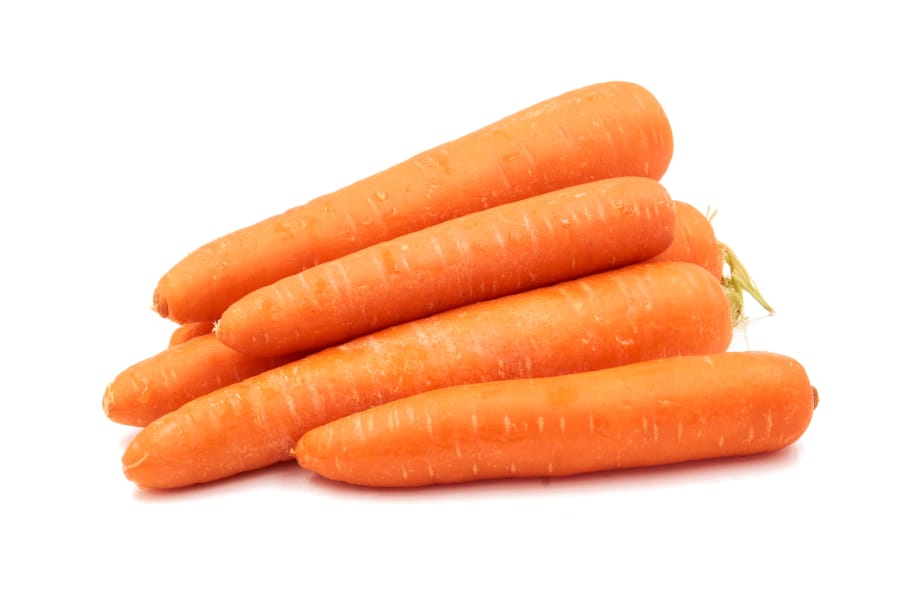Most people envision an orange vegetable when thinking of a carrot, but carrots were originally purple or white. Red and purple carrots are considered Eastern varieties, while yellow, orange or white carrots are known as Western-type carrots. The Eastern-type carrots have largely been replaced by the orange Western types that are common in today’s grocery stores.
Carrots should be firm, smooth, fairly straight and bright in color. The deeper the color, the more beta-carotene is present. If green tops are still attached, they should be brightly colored and feathery. Older carrots will be limp, rubbery, have darkly colored stem ends or severely wilted green tops. Store fresh carrots for up to 21 days at room temperature, or around two months in the fridge.
Carrots are the perfect snack. They are crunchy, tasty and are about 10 percent carbohydrate. They are extremely low in fat and protein. Purple carrots are loaded with nutrients such as fiber and potassium. Like other purple fruits and vegetables, they contain potent antioxidants called anthocyanins.
Carrots can be pulped, mashed, boiled, pureed, grated, fried, steamed, stewed, baked, juiced or eaten raw. Just one medium carrot or a handful of baby carrots counts as one serving of your daily veggies. Cooked carrots are better for you than raw. Cooking the vegetable releases more beta-carotene. The raw vegetable only gives you 3 percent of your recommended daily allowance of beta-carotene, but cooked carrots give you up to 40 percent.



